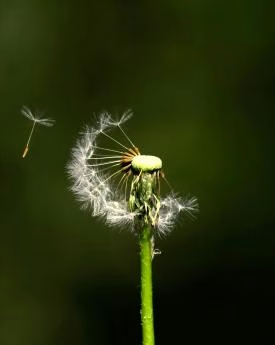Beautiful flowers aren’t just for viewing; some species can also be used in delicious dishes. Today, we’ll share eight safe edible flowers and the health benefits they offer.
Roselle
- Roselle thrives in tropical and subtropical climates and is often used to make hibiscus tea or jam.
- But it’s also great in baked goods and cooking (see the recipe above), or simply added to salads or ice cream.
Roselle is rich in antioxidants like flavonoids and anthocyanins, which help the body fight oxidative stress and offer benefits like lowering blood pressure, cholesterol, and cardiovascular health.
Dandelion
Dandelion flowers are typically yellow and range in size from 2 to 4 cm in diameter. Dandelion flowers contain powerful antioxidants like flavonoids, which are beneficial to the human body and can fight free radicals and reduce inflammation.
Dandelion flowers are often used in salads, baked goods, and teas.
Lavender Flowers
- Most people are familiar with lavender, as there are numerous lavender-related products available, such as lavender essential oil, lavender potted plants, and lavender tea. During lavender season, you can even enjoy a variety of lavender-flavored snacks.
- The purple lavender flowers look dreamy and look stunning in salads, baked goods, or even in cooking. Their rich aroma leaves a lasting impression.
Lavender’s most well-known health benefit is its ability to aid sleep.
Honeysuckle
Honeysuckle flowers, often white or yellow, are not only ornamental but also edible. Traditional Chinese Medicine uses honeysuckle as a medicinal herb, believed to clear heat and detoxify.
Honeysuckle is commonly consumed as a tea (see the recipe below) or as a delicious syrup.
Roses
- There are many varieties of roses in the world, and all are edible, regardless of size or color. The flavor may or may not be the same.
- Rose flowers, rich in fragrance, are perfect for salads, baked dishes, and cooking, and they are equally delicious whether fresh or dried.
Rose flowers contain nutrients such as vitamins A, C, E, anthocyanins, and tannins, which are believed to provide antioxidant benefits and enhance beauty.
Daily Flowers
Daily Flowers contain vitamins A, B vitamins, beta-carotene, calcium, iron, and selenium, and are believed to have eye-protecting, blood pressure-lowering, anti-inflammatory, lung-moistening, and sleep-inducing properties.
Daily Flowers are most commonly added to soups like pork rib soup and chicken soup, or stir-fried with other ingredients.
Pansies
- Pansies come in many different colors, with purple, yellow, and blue being the most common.
- Beautiful pansy flowers are often used as garnishes in cooking, such as on salads, as a garnish with cakes and other desserts, or simply as a garnish in dishes.
Pansy flowers contain a variety of antioxidant and anti-inflammatory properties and are believed to help with acne, scar removal, and swelling.
Chamomile
Used as a medicinal herb in Germany and several other countries, chamomile is believed to help relieve stress, relieve coughs, lower blood pressure, improve sleep, and clear liver heat. Chamomile has a slightly sweet flavor and is often brewed into chamomile tea and used in various baked goods.


Leave a Reply